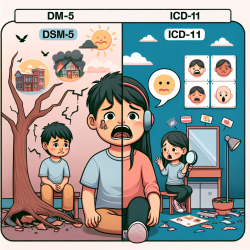Introduction
In the realm of oral health, early diagnosis of potentially malignant lesions is crucial for effective treatment and improved patient outcomes. The VELscope® fluorescence method has emerged as a promising tool in the early detection of oral lesions. This blog explores the findings from the systematic review titled "Early Diagnosis on Oral and Potentially Oral Malignant Lesions: A Systematic Review on the VELscope® Fluorescence Method," and discusses how practitioners can leverage these insights to enhance their diagnostic capabilities.
Understanding VELscope®
The VELscope® is a non-invasive diagnostic tool that utilizes autofluorescence to differentiate between healthy and potentially malignant tissues in the oral cavity. By emitting a blue light, it causes healthy tissues to appear apple green, while abnormal tissues lose fluorescence and appear dark. This method offers a painless and drug-free examination, recognized by the World Health Organization (WHO) as an efficient tool for oral cancer prevention.
Key Findings from the Systematic Review
The systematic review evaluated 25 studies on the clinical efficiency of VELscope® over the past decade. The findings highlighted the tool's sensitivity and specificity, with mean values of 70.19% and 65.95%, respectively. While some studies debate its clinical effectiveness, the review underscores the potential of VELscope® in enhancing early diagnosis, which is pivotal for timely intervention and improved survival rates.
Implications for Practitioners
For practitioners, incorporating VELscope® into routine examinations can significantly aid in the early detection of oral lesions. Here are some actionable steps practitioners can take:
- Training and Familiarization: Invest time in training to understand the nuances of VELscope® and how to interpret its results effectively.
- Integrate into Routine Exams: Use VELscope® alongside conventional oral examinations to enhance diagnostic accuracy.
- Patient Education: Educate patients about the benefits of early detection and the role of VELscope® in maintaining oral health.
- Collaboration: Collaborate with other healthcare professionals to share insights and experiences, fostering a community of best practices.
Encouraging Further Research
While VELscope® shows promise, further research is needed to address its limitations and enhance its diagnostic capabilities. Practitioners are encouraged to contribute to ongoing research efforts, exploring new applications and improving the tool's sensitivity and specificity.
Conclusion
VELscope® represents a significant advancement in the early detection of oral lesions. By integrating this tool into clinical practice, practitioners can improve diagnostic accuracy and patient outcomes. Continued research and collaboration are essential to fully realize the potential of VELscope® in oral healthcare.
To read the original research paper, please follow this link: Early Diagnosis on Oral and Potentially Oral Malignant Lesions: A Systematic Review on the VELscope® Fluorescence Method.










